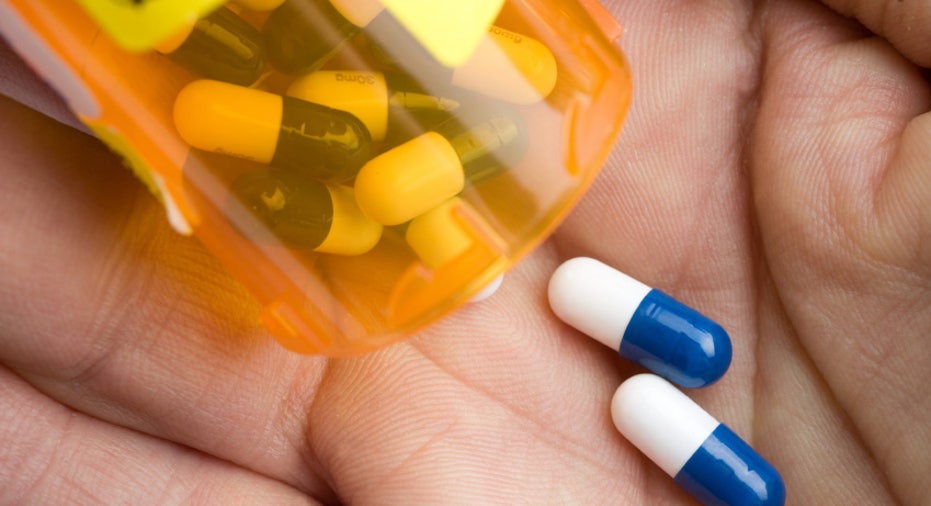Hard to Swallow: Drug Prices for Seniors Jump 26%

The price of drugs used most widely by older Americans rose by almost 26% from 2005 to 2009, plaguing seniors 50 and above with a yearly pharmaceutical tab almost twice the rate of inflation and eclipsed a substantial drop in generic drug prices during the same period, according to an AARP report released earlier this month.
The report examined retail prices for 514 brand-name and generic drugs used widely by Medicare beneficiaries, and says the steep increase was caused by drug price growth among brand and specialty drugs, which rose by 8.3% and 8.9 % respectively, in 2009.
The report shows brand-name drug prices grew by almost 41% and specialty drugs more than 48%, from 2005 and 2009. During the same period generic drugs fell by nearly 31%, and the general inflation rate was 13.3%.
Consumers taking prescription drugs regularly for chronic conditions saw costs rise to $3,168 in 2009 from $2,160 in 2005—a figure that is hard for seniors to swallow.
How increases pinch your wallet
Increases also have a direct impact on drug costs for the 8.9 million pre-Medicare seniors ages 50 to 64 who find themselves uninsured following a job layoff or early retirement and paying out-of-pocket at the drug counter.
High retail prices also affect Medicare Part D enrollees who pay a percentage or all of drug costs rather than a fixed copayment. The more Part D enrollees pay in drug costs, the sooner they are pushed into the Donut Hole in which they directly absorb the effect of higher retail prescription prices.
Higher retail prices are also more likely to push beneficiaries beyond the coverage gap and into catastrophic coverage in which they are responsible for a percentage of their drug costs, further exposing them to price increases.
This would also cause Medicare spending to increase because it covers 80% of Part D enrollee cost once beneficiaries enter catastrophic coverage, the report says.
Among the senior population, there’s often a troubling dynamic between high prescription drug costs and a need to forego other basic necessities, says Leigh Purvis, AARP senior strategic policy advisor and report co-author.
Even worse: the risk that to save money patients would jeopardize their health and refrain from filling a prescription.
Reform, generics and other remedies
Health-care reform has helped diminish the sting of drug costs for those that fall in the donut hole through rebates and discounts on brand name or generic drugs that will rollout through 2020.
Purvis says a lot of brand name drugs are going off patent in the next three to four years which will make more generics available. One concern: the price of a drug soon to go off patent will increase substantially right before the conversion.
” A drug loses about 80% of its pricing when it goes off brand,” says Morningstar director Damien Conover. Though prices usually do rise throughout the life of a branded product, he characterizes an increase before a drug goes off brand as a “slight acceleration.”
Despite the AARP report takeaway, Generic Pharmaceutical Association (GPhA) president and CEO Ralph G. Neas represents the views of other industry experts, calling the report findings “evidence of the dramatic savings generic drugs can achieve.”
Yet while generic drugs comprise about 80% of overall U.S. prescriptions, acceptance of generic usage varies. In some instances, physicians, perhaps those who have been prescribing brand for many years may be stuck in the “brand track.”
“There is some evidence that older docs may be more resistant to generic prescribing,” Purvis says. “Generic manufacturers are not in doctor’s offices advocating. It’s a much different ball game [than selling brand-name drugs].”
Still, many consumers recognize generic value. And, “eventually economics reigns,” Purvis says.
Health experts and industry stakeholders are advocating change that may be more wallet-friendly to seniors. These include allowing HHS to negotiate drug prices in much the same way pharmacy benefit managers do and establishing a shortened exclusivity period for biologic drugs, from 12 years to at most seven for a biosimilar drug to hit the market.
Here’s what you can do
Bolster your drug-spending savvy. AARP suggests its Drug $avings Tool, drugsavings.aarp.org to help you determine less expensive drug alternatives. Its “doughnut hole calculator,” doughnuthole.aarp.org calculates yearly drug expenses
Tell your physician that cost is an issue. Most doctors will work with patients on a budget to find less-costly options or even provide free samples they get.
Explore less expensive drug alternatives with your pharmacist. Review the list of drugs you are taking and your plan’s drug formulary and tier structure with your pharmacist. This Medication Therapy Management may involve a fee, but in the long run you may well come out a saver, says Purvis.
Stick with your script. Continue to take medications through the prescribed end date, even if you feel better. Noncompliance could compromise your health in the long run, not to mention increase your costs in face of a worsening condition.
Be at the ready. You’re never too young to be informed about your health and drug options—don’t start researching different plans too late in the game.